5 alternatives to word-of-mouth marketing for small businesses

1. Build a client referral marketing system
Word-of-mouth marketing needs systemising or it is just a game of hope. It’s all well and good waiting for referrals to come to you but you can achieve much more by implementing a simple system
To do that, go through these steps:
- Get clear on your value proposition – what your business provides that others’ do not and why people should choose your business.
- Trim your existing client list – you may need to shed some low-value or ‘problem’ clients to focus your time on higher value clients and new business.
- Segment your database by value, how long they have been with you or what stage of the sales funnel they have reached.
- Set expectations from day one – when a prospect signs up, set the expectation by telling the client that you will speak with them in the future to request referrals.
- Ask the question– if you feel awkward asking for referrals, start by asking your closest clients for details of two businesses that would benefit from your services.
- Get creative - include a line in your email signature or arrange special events for clients - and ask them to bring two business associates along.
- Show your appreciation with a verbal or emailed ‘thank you’ - or take it a step further and send a card.
2. Get smarter with LinkedIn
LinkedIn is the world’s largest database of professionals. Somewhere in the region of 500,000 professionals use the platform. It’s free to use – or low-cost for paid membership.
Depending on your type of business, it’s possible to make LinkedIn the hub of all your marketing activity at very low cost. It will take a bit of time but if you focus on the following areas, you will have a head start on the many other LinkedIn users:
- Get crystal clear on what’s unique about your business and who exactly you’re serving (your target audience).
- Optimise your profile to focus on exactly what you do and your value proposition – and include your main keywords. Focus your summary on talking to your target audience.
- Grow your network by connecting with your target audience
- Engage with this growing network by liking/commenting/interacting in groups and posting status updates and links to valuable content.
The two mistakes that many business owners make are:
- Treating LinkedIn as a peer-to-peer network - wasting time talking to other industry professionals rather than potential clients; or
- Treating it as a sales platform - and losing their network by trying to sell straight off.
LinkedIn is a superb marketing platform for small businesses to generate a steady flow of leads if you get the strategy right as per above.
3. Put resources into SEO marketing
Search Engine Optimisation (SEO) marketing can be time-consuming – but it is essential for getting found by your target audience.
SEO is the process of optimising your online content for the search engines (Google, Bing, Yahoo etc.) This includes your website’s standard pages, but also its blog posts, and anything else you have published online—such as videos—that can be found through ‘organic search’. (Organic search means ‘free search’, as opposed to paid search such as Google AdWords or Facebook Advertising).
Understand the basics of keywords and SEO – then hire reliable and recommended SEO professionals to look after your campaigns.
It is unlikely that you will have the time or expertise to effectively manage your own campaigns but your SEO professional should be able to guide you with on-page SEO (keyword placements), off-page SEO (link-building etc.), and the content required to improve search rankings.
If you take informed and consistent action, results will come. Think long term with SEO – and if you are largely targeting your local market, be sure to optimise well for local search.
4. Reach out with email marketing
If you have spent time and resources to connect with prospects online (on LinkedIn, Twitter, etc.), and offline (at various networking events), you will rapidly build a large database of potential clients.
How do you reach out regularly to these prospects and stay top of mind?
As well as through your activity on LinkedIn, you can get your prospects’ permission to include them in your newsletter marketing and in email marketing campaigns for other offers you may present from time to time.
Well-written email marketing campaigns have the power to convert prospects into customers – or at least move them along the sales funnel so they are closer to signing up.
Get professional copywriting assistance here to increase open rates, click-throughs, and conversions.
5. Build authority with content marketing
Nothing beats regular, original, relevant content for improving the relationships with prospects. And, in the long term, that’s what marketing is all about.
Why?
If you focus on the main questions going through your prospects’ minds, you establish authority status. It builds trust and confidence and you will be top of mind when they are ready to sign up for the types of services you offer.
That may not be today or tomorrow – it could be six months down the track or even longer. But this longer-term marketing activity will pay dividends in the future, as part of a multi-pronged marketing strategy.
The types of content you can focus on include:
- Articles that answer key questions in clients’ minds
- Blog posts about industry changes
- How-to or FAQ videos
- Infographics that succinctly provide useful data and concepts
Market your small business – no excuses!
There are literally no excuses for not marketing a business.
No time? Make time.
No budget? You don’t need it.
Don’t know how? You do now.
Don’t need it? You will.
Got enough leads? You soon won’t.
Marketing is the key to bringing a steady flow of opportunities in – and leads are the lifeblood of any small business. With a good sales system to convert leads, you have new revenue, healthy cash flow, and growth.
But generating leads can be an awkward subject for accounting and financial professionals with little to no marketing or sales experience. It’s easier to rely on leads coming to you than to go out hunting for them.
Don’t confuse marketing with sales: marketing is the process by which you bring in leads. It doesn’t need to be salesy. Sales is the process of converting leads into revenue.
Remember that your word-of-mouth leads always have the potential to completely dry up. Such passive marketing is dangerous and stressful for any small business owner: suppliers still need to be paid and things can quickly go south if the cash flow dries up.
Get proactive and market your business on multiple fronts and you have a much better chance of not only maintaining a healthy cash flow but growing your business for the future.
If you need assistance with developing marketing for your small business, get in touch with us and we’ll be able to point you in the right direction, as we know a number of marketing specialists in different areas.
Need help with your accounting?








